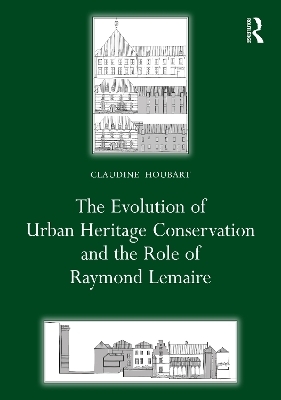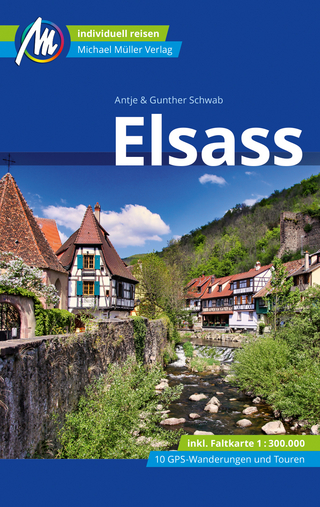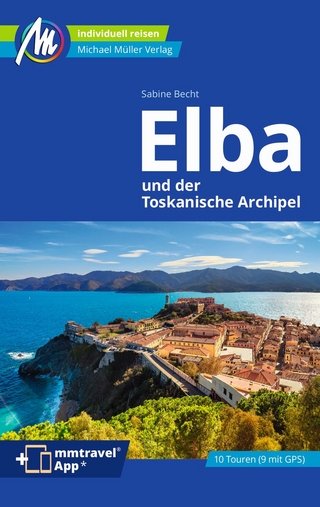
The Evolution of Urban Heritage Conservation and the Role of Raymond Lemaire
Routledge (Verlag)
978-1-032-58893-3 (ISBN)
- Noch nicht erschienen (ca. Oktober 2024)
- Versandkostenfrei innerhalb Deutschlands
- Auch auf Rechnung
- Verfügbarkeit in der Filiale vor Ort prüfen
- Artikel merken
The 1960s and 1970s saw a marked change in the approach to built heritage conservation. From a focus on the preservation of individual buildings, attention turned to the conservation, regeneration, and reuse of entire historic districts. A key player in this process was the Belgian art and architecture historian Raymond Lemaire (1921–1997), yet beyond those in conservation circles few people know of his work and influence or even recognize his name.
In this book, Claudine Houbart traces how the change came about and the role played by Lemaire. She describes his work and influence and in so doing provides a history of urban conservation over the last four decades of the twentieth century and beyond. The first chapter summarizes Lemaire’s background from his training during the Second World War and his work as a Monuments Man immediately after the war, to his role in the drafting of the Venice Charter and his appointment as Secretary General of ICOMOS (International Council on Monuments and Sites). The next chapter describes the rehabilitation of Great Beguinage in Louvain. Now a UNESCO World Heritage Site, the project was directed by Lemaire and is a perfect example of the restoration of an entire district. The following chapter provides case studies of his work in Brussels, demonstrating his methodology in action. The final chapter discusses the transposition of the model of the historic city to urban projects and summarizes Lemaire’s influence on heritage conservation today, particularly integrated conservation. His participation in drafting key conservation documents sponsored by the Council of Europe, UNESCO and ICOMOS, and his desire to revise the Venice Charter are discussed. The book’s conclusion reflects on what has gone before, ending aptly with Lemaire’s own words ‘the past, properly understood, is one of the references for judging the value of today and tomorrow’.
Claudine Houbart, an architect and art historian, is a professor at the Faculty of Architecture at the University of Liège, and heads the DIVA (Documentation, Interpretation, Valorization of Heritage) research group. She is one of the Belgian representatives on the ICOMOS Committee on Theory and Philosophy of Conservation and Restoration.
Preface
Acknowledgements
List of Acronyms
Introduction
Chapter 1 From Archaeology to Conservation
A Family Legacy
Training in Theory and Practice
University Education
Training in the Field: the CGRP and the Ministry of Public Works
Building a National and International Network
The Recovery of Looted Artworks
Heritage Protection in Wartime
First Contacts with Italy
A Personal Vision of Conservation
Raymond M. Lemaire and the restauro critico
The St. Lambert Chapel in Heverlee
The Venice Congress (1964): A Turning Point
Drafting the Venice Charter
The Founding of ICOMOS
Chapter II Constructing an Ideal Historic City: The Great Beguinage of Louvain (1962–1972)
A Unique Context
An Exceptional ‘Traditional’ Ensemble
A Tailor-Made Programme
A Flexible Schedule
A Great Freedom of Action
The Venice Charter put to the Test of the Rehabilitation of Urban Ensembles
The Interiors: Conservation vs Comfort
The Façades: A Radical Restoration
The Additions: From Contrast to Integration
The Public Space: A Picturesque Vision
A Reflective Process
Lessons from Gustavo Giovannoni
The Historic Cities’ ‘Way of Being’
Chapter III Ideal vs Reality: Brussels (1967–1990)
Contrasting Precedents: Brusselization and Urban Scenery (1940–1960)
Towards a Functionalist City
The ‘Sacred Blocks’: An Urban Scenery
The Input of International Reflections and R.M. Lemaire
The 1960s: A Gradual Awareness
The Quartier des Arts: A Catalyst
A Challenging Context
New Methodological Tools for a New Vision
Learning from Eastern European Experiences
Restoring the Links between People and their Built Environment
‘Thinning Out’ and Opening the Blocks
Selective Preservation
‘Architectural Design in an Old Urban Environment’
Correcting the Cityscape
To Conclude
Chapter IV Towards a Holistic Approach
R.M. Lemaire, a ‘Complete Architect’
The Emergence of Integrated Conservation
The Council of Europe’s Committee on Monuments and Sites
New Doctrinal Instruments
The Venice Charter: A Necessary Revision
Bruges: A Laboratory for ‘Integral Planning’
From Rehabilitation to ‘Retrospective Utopia’
Towards Post-Modernism?
Conclusion
Appendix 1. Commission royale des Monuments et des Sites. Problèmes de doctrine
Appendix 2. Charte de Venise [première version]
Appendix 3. Charte internationale sur la conservation et la restauration des monuments et des sites (Charte de Venise)
Appendix 4. Charte de Venise, texte révisé
Index
| Erscheint lt. Verlag | 16.10.2024 |
|---|---|
| Reihe/Serie | Planning, History and Environment Series |
| Verlagsort | London |
| Sprache | englisch |
| Maße | 174 x 246 mm |
| Themenwelt | Reisen ► Reiseführer ► Europa |
| Naturwissenschaften ► Biologie ► Ökologie / Naturschutz | |
| Sozialwissenschaften ► Soziologie ► Spezielle Soziologien | |
| ISBN-10 | 1-032-58893-4 / 1032588934 |
| ISBN-13 | 978-1-032-58893-3 / 9781032588933 |
| Zustand | Neuware |
| Haben Sie eine Frage zum Produkt? |
aus dem Bereich


